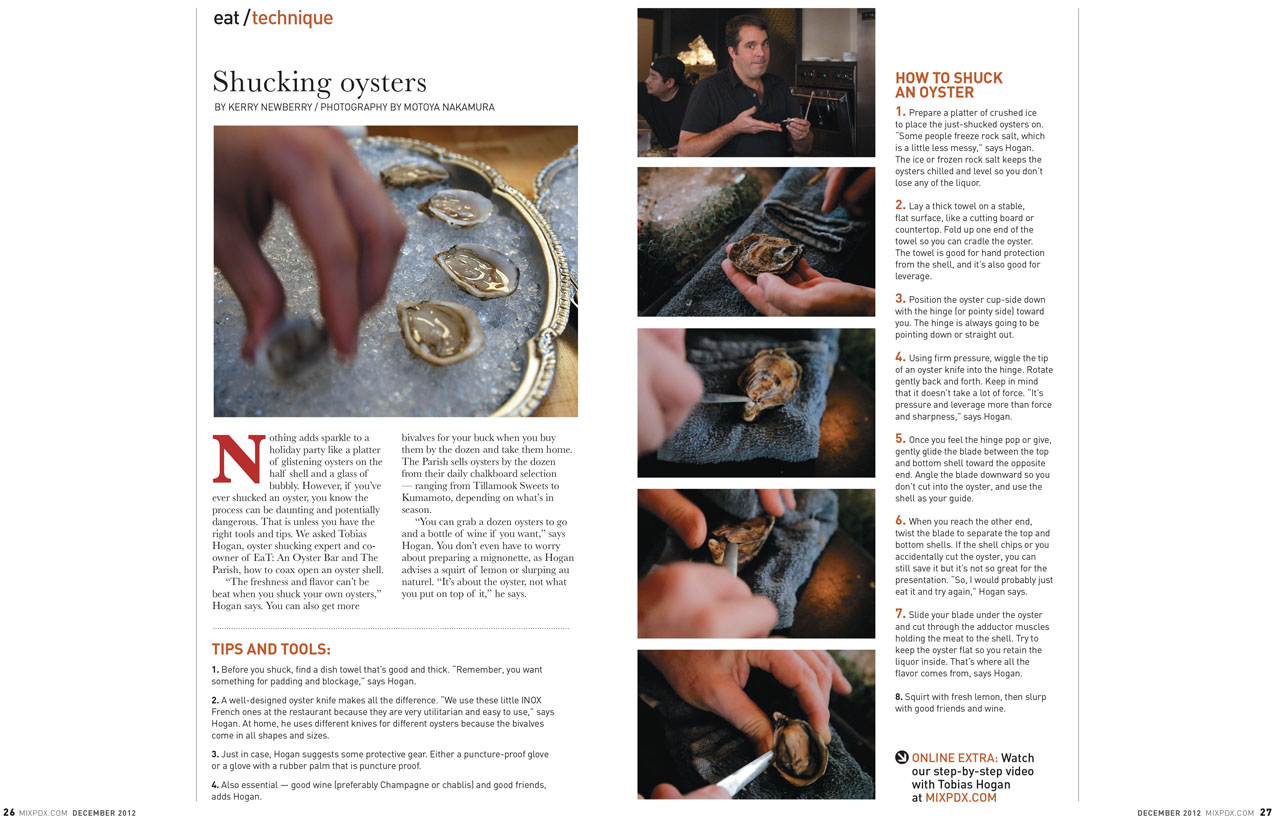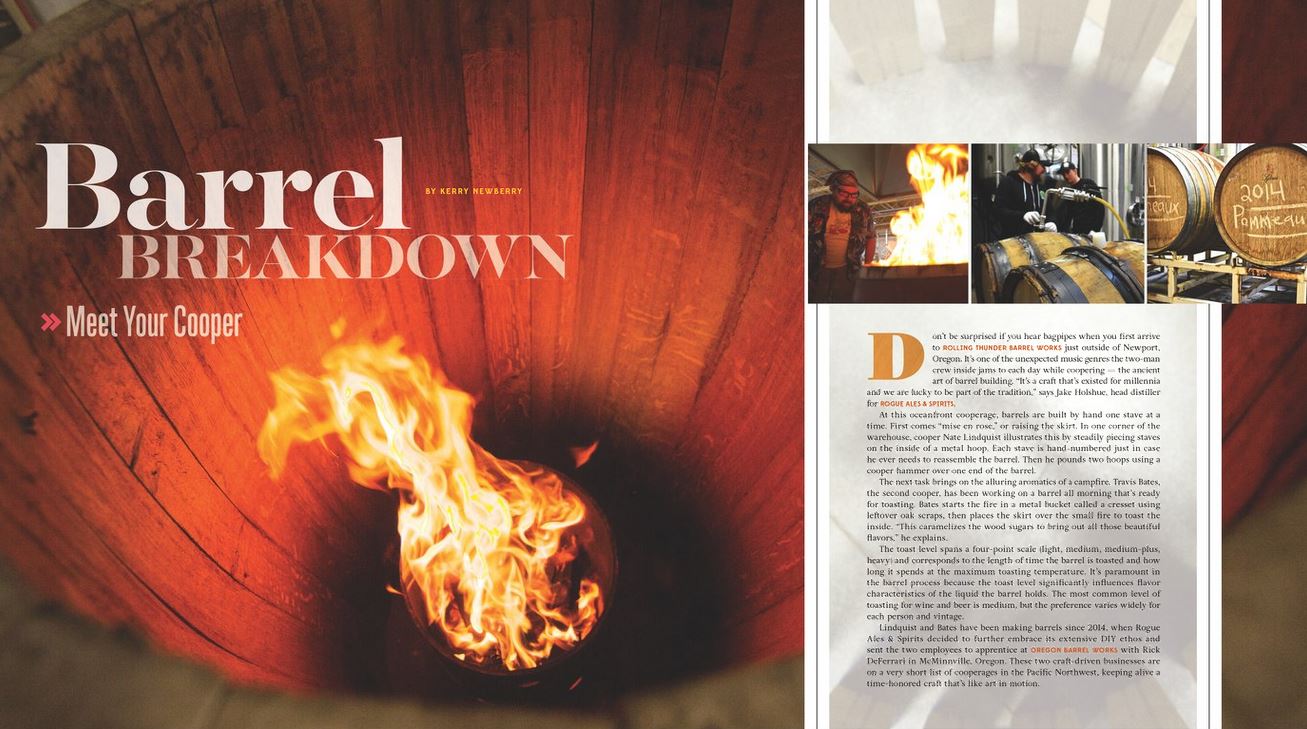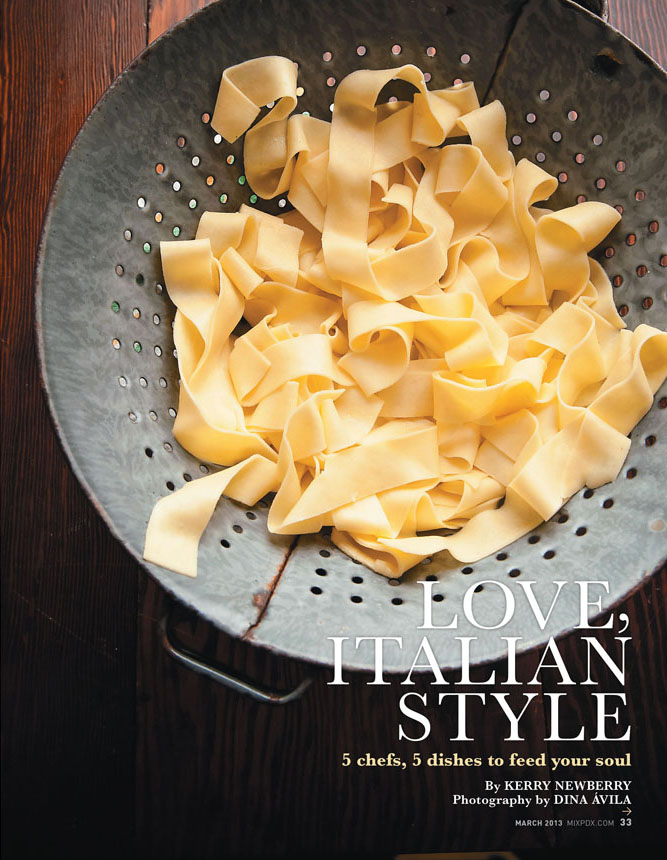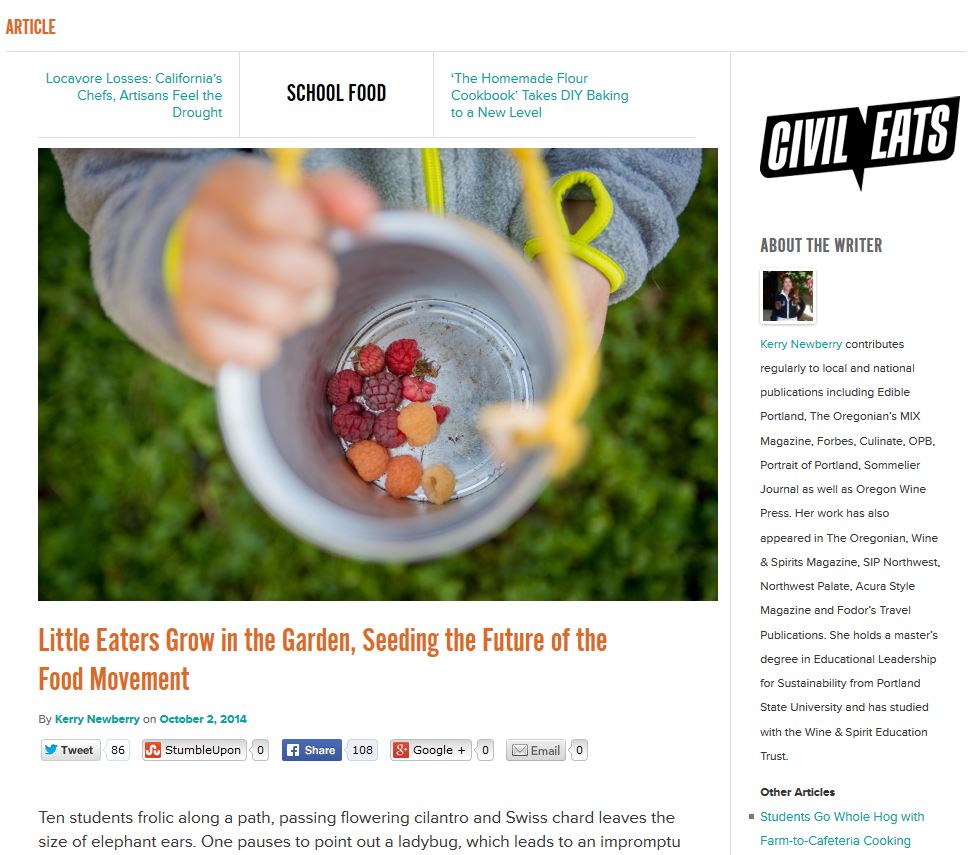Add a burst of color and flavor to your plate this summer with edible flowers
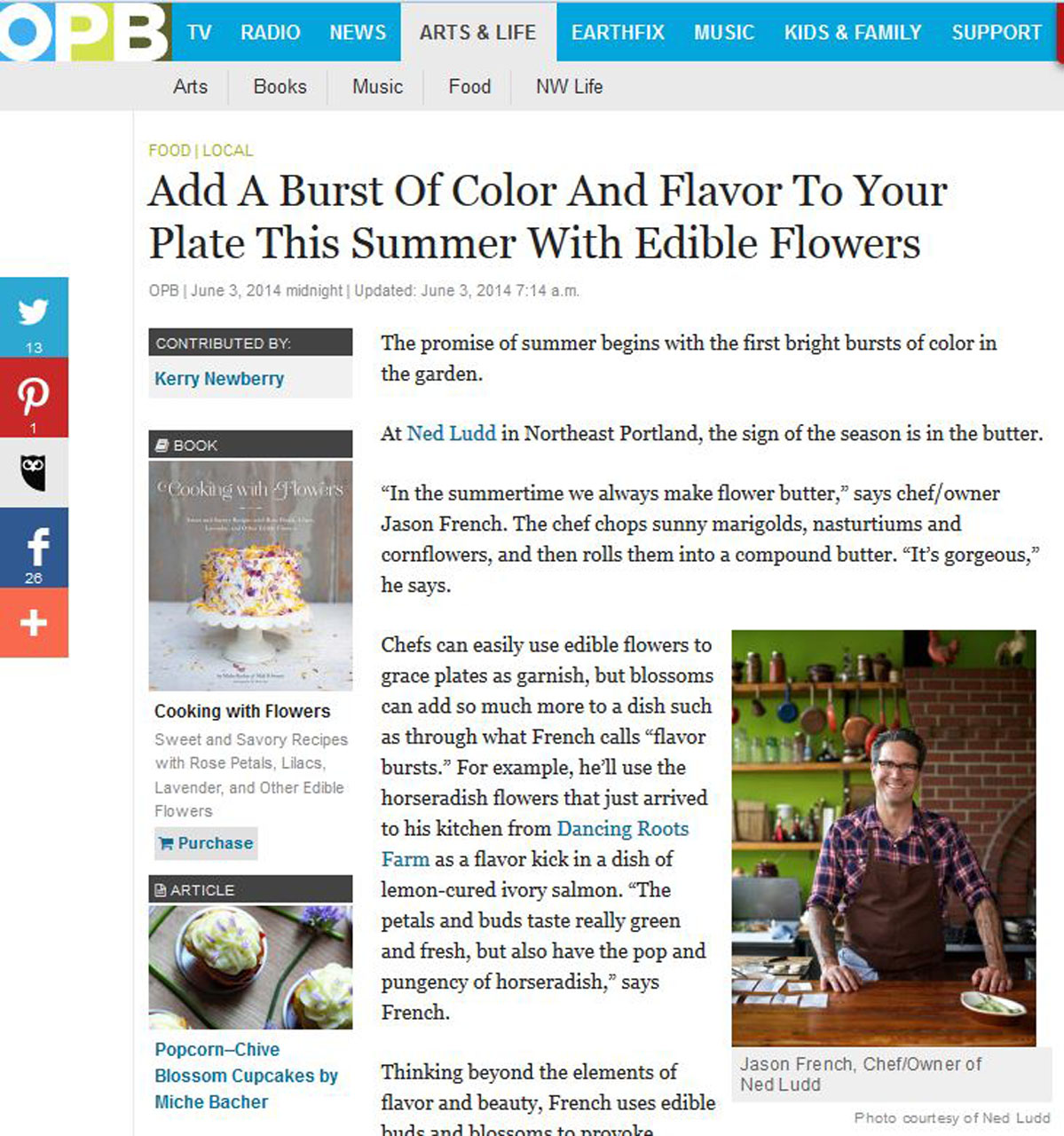
The promise of summer begins with the first bright bursts of color in the garden.
At Ned Ludd in Northeast Portland, the sign of the season is in the butter.
“In the summertime we always make flower butter,” says chef/owner Jason French. The chef chops sunny marigolds, nasturtiums and cornflowers, and then rolls them into a compound butter. “It’s gorgeous,” he says.
Chefs can easily use edible flowers to grace plates as garnish, but blossoms can add so much more to a dish such as through what French calls “flavor bursts.” For example, he’ll use the horseradish flowers that just arrived to his kitchen from Dancing Roots Farm as a flavor kick in a dish of lemon-cured ivory salmon. “The petals and buds taste really green and fresh, but also have the pop and pungency of horseradish,” says French.
Thinking beyond the elements of flavor and beauty, French uses edible buds and blossoms to provoke emotion. “It’s much more about a color scenario, really trying to get the plates to feel summery — a flowers-in-the-field type emotion we are trying to evoke,” he says.
Using ingredients to move people, or cause them to pause for reflection, is not uncommon in the kitchen at Jory Restaurant at The Allison Inn & Spa in Newberg. There, executive chef Sunny Jin likes to play with floral hints, using delicate blossoms from more robust and aromatic herbs.
If you add rosemary to a chilled green garlic soup, the addition of a mere small sprig will overtake the entire soup’s profile, the chef explains. “However, if you use only its flowers paired with smoked duck and manchego, you’ve got something that connects,” says Jin.
The chef recently created a dish of rabbit Involtini with spring nettle risotto, pinot vine-smoked marcona almonds, salad of chicories, and thyme blossoms. “Most of us can easily identify the flavor of thyme,” he says, “but the blossoms really make you think for a few seconds and wonder what this familiar taste is.”
Jin plucks edible flowers from a 1.5-acre chef-garden just outside the restaurant. “A few of our favorites in the kitchen are blossoms of thyme, chive, mint and rosemary,” he says. Arugula, mustard, violet, basil, borage and even dandelion are some of the flowers you’ll find in the kitchen any given day. The chef also harvests lilac, lavender, nasturtium and radish flowers.
The restaurant is currently running a cold salad of asparagus with chèvre panna cotta, bacon brittle, preserved Meyer lemon emulsion, wild rice popcorn, and arugula buds and blossoms. Jin finds that the buds and blossoms of arugula add a subtle spicy note and distinct arugula flavor without the use of the common leaf.
In Eugene at Marché restaurant, founding chef/owner Stephanie Kimmel harvests flowers from the restaurant herb garden for “their visual beauty as well as the nuance and complexity in flavor they add.”
The kitchen gets creative with dishes—braising lamb that has been finished in the pasture on wheatgrass and clover, and then garnishing with wheatgrass gelée and clover blossoms. A full-circle plate.
The garden blossoms often inspire. Kimmel just noticed that the sage is blooming profusely now, so is thinking of a new potato and mozzarella pizza with a sage blossom garnish for fun. In the summertime, the kitchen uses scarlet runner bean blossoms on summer salads, as well as fennel flowers, calendula and the classic nasturtiums.
On the dessert side, Kimmel just featured a caramel-pine nut tart with rosemary ice cream with rosemary flowers. In June, the kitchen makes a rose petal ice cream sundae with strawberry compote. “One of our favorite summer desserts is marionberry cobbler with rose geranium ice cream,” she adds.
“I think it’s fun to use all of the parts of an ingredient and to educate our staff and clientele about the possibilities,” says Kimmel.
Possibility is a theme in the book Cooking with Flowers (Quirk Books) with more than 100 sweet and savory recipes, spanning from spring tulip and pea shoot salad to steamed sunflower buds. Spring favorites of author Miche Bacher include the flavor-packed popcorn chive cupcakes and the dandelion jam.
The chapters and recipes are organized by flower–ranging from calendualas to violets, and includes legends, lore and information on the Victorian “language of flowers.” Bacher hopes the book prompts home cooks and gardeners to eat flowers, “put more “pretty” on people’s plates if you will.”
On the final page, Bacher dedicates to readers: “Work hard, but take time to eat your roses.”
Published by OPB, June 2013
